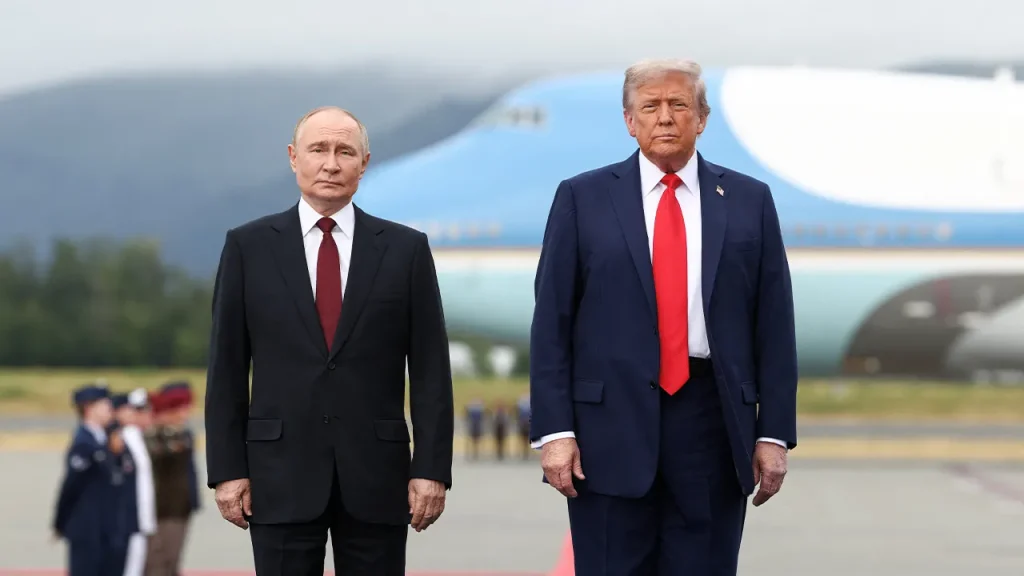U.S. and Russia Draft Plan to End Ukraine War, Requiring Major Concessions from Kyiv
Recent reports indicate that the United States and Russia have been working on a framework to end the ongoing conflict in Ukraine, a plan that would require significant concessions from Kyiv. According to sources familiar with the matter, U.S. special envoy Steve Witkoff has been quietly developing this proposal over the past month, gathering input from both Ukrainian and Russian officials to determine acceptable terms for each side. The plan reportedly has the backing of President Donald Trump, who has expressed frustration with both parties’ reluctance to commit to a peace agreement. White House Press Secretary Karoline Leavitt confirmed the administration’s commitment to finding a resolution, stating, “President Trump has been clear since day one that he wants the war between Russia and Ukraine to end, and he has grown frustrated with both sides for their refusal to commit to a peace agreement.”
The proposed framework, which remains subject to change, appears to include several major concessions from Ukraine. While specific details remain limited, the plan would reportedly require Ukraine to cede territory to Russia—particularly the entire eastern Donbas region, which Russian President Vladimir Putin has identified as a key objective of the invasion. Additionally, Ukraine would be required to abandon certain weaponry, and the agreement would involve scaling back some U.S. military assistance to the country. These terms align with demands that Moscow has consistently made since launching its full-scale invasion of Ukraine in February 2022, though they present a stark contrast to Ukrainian President Volodymyr Zelenskyy’s repeated refusals to surrender territory.
Secretary of State Marco Rubio acknowledged the complexity of the situation, emphasizing that officials will “continue to develop a list of potential ideas” for ending the war based on input from both sides. “Ending a complex and deadly war such as the one in Ukraine requires an extensive exchange of serious and realistic ideas,” Rubio stated on social media. “And achieving a durable peace will require both sides to agree to difficult but necessary concessions.” This statement suggests that the U.S. administration recognizes the challenging nature of the negotiations and the sacrifices that would be required to reach a lasting agreement. However, it’s worth noting that the framework would not place the burden of concessions solely on Ukraine—Russia would also need to make compromises, including halting its attacks.
The revelation of this potential peace plan comes at a critical juncture in the conflict, which has now been raging for over two years with devastating consequences for Ukraine’s population, infrastructure, and sovereignty. While the prospect of ending the bloodshed may be appealing to many, the proposed terms have raised significant concerns about the precedent that could be set by allowing Russia to gain territory through military aggression. Ukrainian officials have long maintained that territorial integrity is non-negotiable, with Zelenskyy consistently rejecting the notion of ceding land to Russia. This fundamental disagreement represents one of the most significant obstacles to reaching a peace agreement that both sides could accept.
The Kremlin’s response to reports of this peace plan has been measured, with spokesman Dmitry Peskov stating on Thursday that “there are no consultations per se currently underway” with the U.S. on ending the war in Ukraine. “There are certainly contacts, but processes that could be called consultations are not underway,” he told reporters. This careful phrasing suggests that while communication channels may be open, formal peace negotiations have not yet been established. The Russian government’s cautious stance reflects the complex dynamics at play and the delicate nature of any potential peace talks, particularly given the significant territorial gains Russia hopes to secure.
As details of this proposed framework continue to emerge, the international community watches closely to see whether it could provide a viable path toward ending one of Europe’s most devastating conflicts since World War II. The stakes are extraordinarily high—not just for Ukraine and Russia, but for the broader geopolitical landscape and the principles that govern international relations. Any agreement that involves Ukraine surrendering territory would represent a significant departure from the West’s previous stance on the conflict and could have far-reaching implications for global security and the international order. While the desire to end the war and stop the suffering is universal, the question remains whether a peace that comes at the expense of Ukraine’s territorial integrity would truly be sustainable in the long term, or whether it would simply set the stage for future conflicts.


